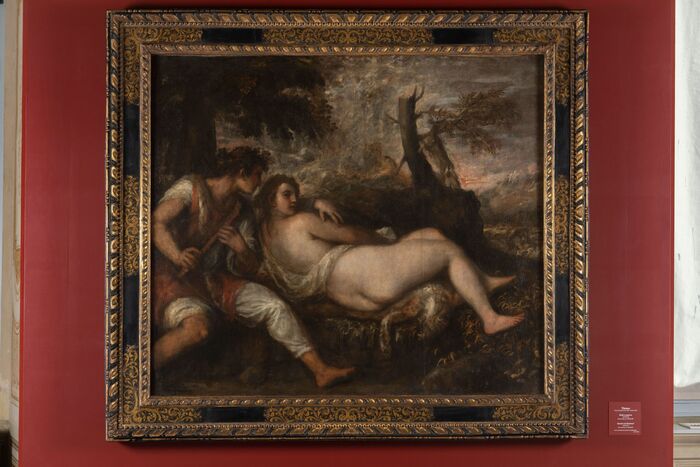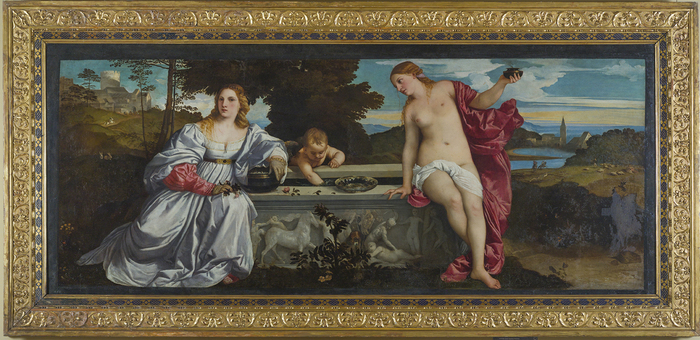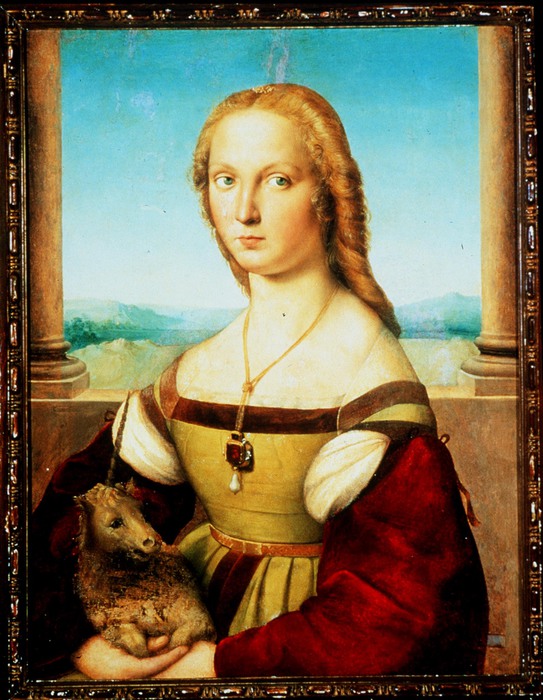(ANSA) - ROME, JUN 13 - Turned from the back, the languid gaze that almost seems to want to meet that of the observer, the very young nymph of Titian fills the room and fascinates with the diaphanous skin and the opulent shapes of her naked body.
The story alludes to a love scene, next to her the young shepherd looks at her and concentrates his hands on a slender flute.
Yet, even more than the love and passion that could at times break out between the two, it is the time of her life with its inevitable cycle of seasons that seems to be the master in this scene.
With death always close by, she ready to bite the flesh like the goat in the background to tear the last still green branch from a by now dry tree.
And all around a dark and ghostly nature,
The small, dense exhibition that opens from June 14 to September 18 at Borghese Gallery in Rome.
With four large canvases placed in dialogue with each other in the room where the paintings of the Venetian school and of Titian in the collection of the Roman museum were already exhibited.
"For us an exhibition dossier", explains the curator Maria Giovanna Sarti, "a small review that allowed us to put the works in dialogue around some themes always present in the painter's production, almost a red thread that accompanies him from the beginning to at the extremes of maturity ".
An exhibition, she says, which was also the
On the first floor of the baroque residence that once belonged to Cardinal Scipione Borghese, the focus of reflection therefore starts from four large canvases: next to the "Nymph and Shepherd" who has just arrived from Vienna, "almost a thematic and stylistic testament" of the great Titian who died alone in his nineties. a year after completing it, two other huge canvases stand out as a counterbalance.
On the one hand there is "Sacred Love and Profane Love", a severe allegory of matrimonial love with the two Venus, one naked, the other chastely dressed, and on the other a "Venus who blindfolds Love", to which is added, on the wall directly in front of the Nymph, a seventeenth-century copy of "The three ages of man", another masterpiece by Vecellio whose original is preserved in Edinburgh.
The themes are the same everywhere, the curator points out, love in its various forms and nature understood as a significant landscape and place of human action, both closely linked to the passing of time, to the inexorable cycle of life.
However, the colors and atmospheres change, the way of understanding and representing them, perhaps also due to the various commissions of the great painter and his rich workshop.
And if in the limpid majesty of the "Sacred Love and Profane Love" it almost seems to find the echo of the very sad and cruel story of the wedding that he was supposed to magnify (those between Niccolò Aurelio and Laura Baragotto, arrived after he had some participated in the death sentence of her father and her husband) and opens a window on the Venice of the '500, in the "Venus who blindfolds love",
late and complex allegory, the idea of conjugal sentiment is affirmed as the right balance between passion and its containment entrusted to a queen Venus, blonde, jeweled and beautiful, who resolutely blindfolds the eyes of a cupid.
While on the wall directly opposite to that of the Nymph and the Shepherd, "The three ages of man" - which Sassoferrato copied in the seventeenth century from an original by Titian - acts as a perfect counterpart, offering the same reflection, made in another moment of life. , about love and time that passes and devours everything.
Ideas, diversity, references.
A reflection in which other works from the museum's collection also participate, including Adam and Eve by Marco Basaiti, two other Titians, Christ scourged and San Domenico,
as well as a painting believed to be a late derivation from a lost Titian model (Venus, Cupid and a satyr).
And that in the nature so far from the Arcadia of the "Nymph and Shepherd" becomes a melancholy thought about the pressing time and the uselessness of existence.














